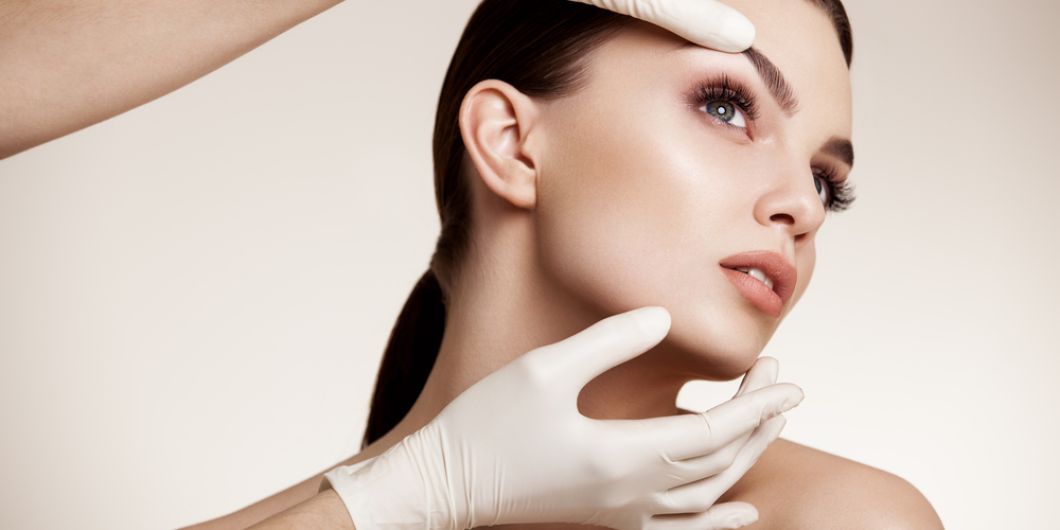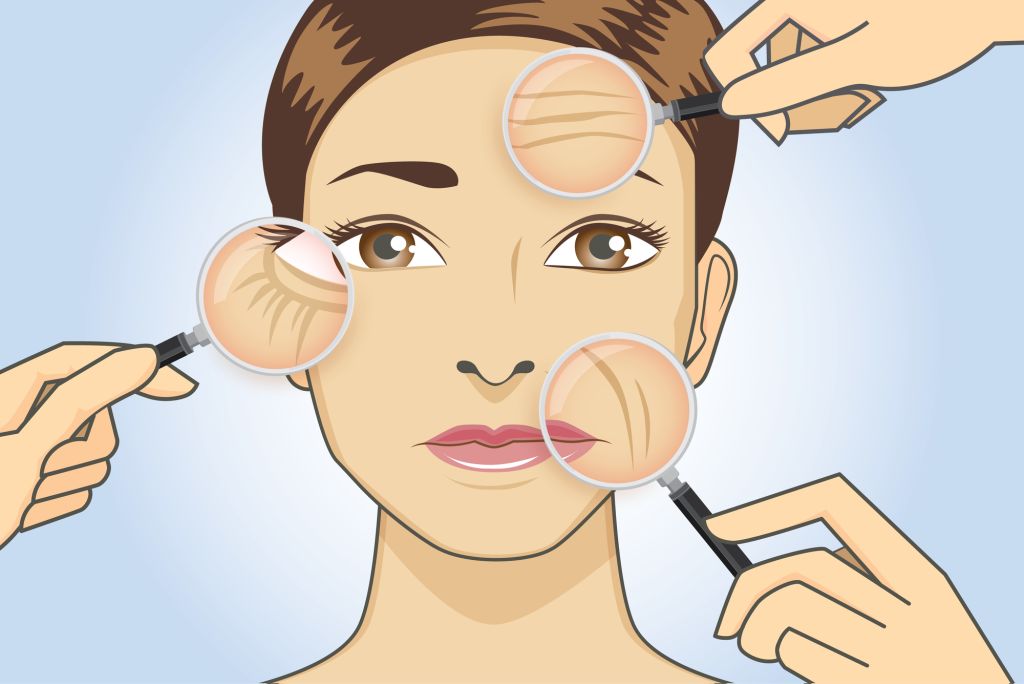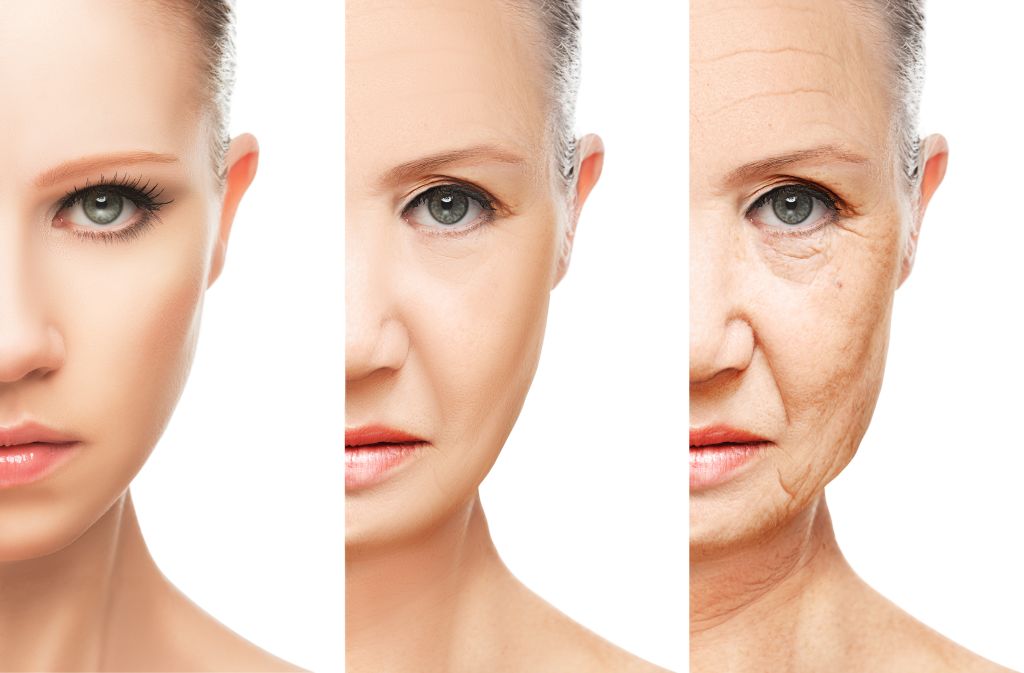- in Anti-Aging by tony
Your Skin as You Age

There are several factors that affect the quality of our skin as we grow older. Some of these aspects are beyond our control, such as our chronological or actual age and genetics, but it’s also great to know that some aspects are within our power to change or influence.
More...
Lifestyle and diet are the major significant influencing factors, but before you make any changes for the sake of your skin health and appearance, it pays to understand the aging process of your skin.
In Your 40’s
Once you are in the 40’s age group the lymphatic system tends to slow down, just like most of the organs and systems inside your body. Unfortunately, this system also plays a vital role in getting rid of toxins from the body.
This decline in the ability to remove toxins as efficiently as before can result in the breaking down of the elastic fibers that are important for supporting the lymph glands. What you will notice as a result is a puffy look around your cheeks and eyes.
It is also during your 40’s that your sebum production may decline and this can adversely impact the outer protective coating of the skin making it more sensitive to environmental influences.
These changes are also accompanied by fluctuating estrogen production, which can cause visible signs of the skin looking less radiant and firm. It can also lead to the appearance of wrinkles and the start of sagging skin around the neck and décolletage area.
If your eyes begin to look a little sunken, this can also be due to bone loss caused by the reduced estrogen production.
In Your 50’s
Now your life is just beginning! So too is a significant drop in collagen production! This is why your skin begins to seriously sag. At this stage of life you may notice the appearance of little pigmentation changes on the skin’s surface. Age spots may start to appear on your face, arms and especially the back of your hands.
These skin blemishes can also be accompanied by the presence of spider veins which are caused by damaged blood vessels. It is also in your 50’s that your skin pores can increase in size. This is because your skin loosens making the openings of the pores appear bigger.
Some women, especially fair women, may experience drier, flakier skin with more wrinkles, than other women who have naturally oilier or darker pigmentation.
Facial hair may also begin to be a problem, as a result of the hormonal imbalances taking place.
The decline of estrogen production and the decline of collagen leads to a lack of skin moisture and ‘luster’ loss. As a consequence your skin’s elasticity isn’t so springy anymore either!
It is also during this period of a woman’s life that the skin becomes more prone to inflammation.
In Your 60’s
In the next decade some of your hormones may now start to return to their normal levels. So there is good news after all!
However, your fascia, the part that connects your bone to your skin may begin to deteriorate, thereby contributing to an increasing loss of your natural skin tone.
So what is the good news if this happens?
The good news is your skin sensitivity may lessen, compared to previous years. If your skin displayed patchy red areas, it too may begin to appear less discolored.
At this stage, your blood circulation to the skin may tend to decline and this can significantly make your skin look duller. Your lips may become thinner and any wrinkles around the mouth may become more apparent.
To sum it all up – changes to your skin are inevitable as you age, however, the rate of change can be minimized by your actions. Your major concerns regarding skin health as you age should be a focus on a healthy diet and avoidance of dietary and
At this stage, your blood circulation to the skin may tend to decline and this can significantly make your skin look duller. Your lips may become thinner and any wrinkles around the mouth may become more apparent.
To sum it all up – changes to your skin are inevitable as you age, however, the rate of change can be minimized by your actions. Your major concerns regarding skin health as you age should be a focus on a healthy diet and avoidance of dietary and environmental toxins.
Drink plenty of fresh water to keep your skin well-hydrated always, stick to your skin firming rituals and get your necessary sun exposure early in the day.
Drink plenty of fresh water to keep your skin well-hydrated always, stick to your skin firming rituals and get your necessary sun exposure early in the day.
so I'm going to talk about the way the skin ages now we have both intrinsic and extrinsic aging intrinsic are the factors that were born with deep that are programmed in our DNA and also the decline of growth hormone which we are all exposed to as we age extrinsic aging are those factors that we are exposing ourselves to so the Sun is a big factor an interesting example is one on our website in the about the about dr.
Bomer section that shows a picture of me and compared to my brother who has always been avid with the Sun sports and he never used any sunscreen and it's interesting to see the difference and you can see that he has bad sun exposure problems and my skin looks good because I've been taking care of it we also are exposed to smoking
you know some people smoke and this is very toxic to our entire body and significantly affects our skin in a negative way as well as our diet
our diet is a very important component in affecting the inflammation in our body which affects the inflammation in the skin and can adversely affect our skin with respect to spotting and acne which can lead to scarring and so that's a strong component as well
so what's happening to our skin as we age it's actually getting thinner and it's losing its water content and it's losing its elasticity so what's happening is ...
you know youthful skin and say this thick when we get older it becomes much thinner and we really were losing collagen in the dermis and we're losing the elastin the collagen is really the bulk and the elastin is what allows the skin to jump back to where it was and that water content also really helps to maintain the thickness of the skin
and that's the hyaluronic acid in the skin that we lose as we age we also get melanin deposition or coalescence where we get the brown spots so our skin
the color of our skin whether we're white or African American or Asian you know that those colors of our skin are determined by the melanin in our skin and as we are exposed to Sun the melanin gets disrupted and starts to coalesce into spots and we get the production of irregular coloration
we also get dysregulation of the vasculature and that can be in response to inflammatory components and we start to get some reddish discoloration as well so as you can see in the diagram this is a representation of older skin and younger skin
you can see the younger skin is thicker compared to the older skin the older skin has less collagen and elastin less water content and also some wrinkling which is due to the loss of elastin less the lack of spring back to where the skin had been before
so how do we prevent and reverse the aging of our skin well first we need to really protect ourselves from the Sun hopefully we're starting when we're younger I unfortunately didn't have that I got sun exposure a lot of children have hopefully these days and age we know about the sun but it really takes that person committing to good behavior in using sunscreen anti-inflammatory diet is also very important if we eat high sugar and a fatty diet we will have more acne, dairy as a big component and acne leads to scarring and pigmentation
and in terms of treating the aging skin the medical grade skin care products have been scientifically proven to generate the collagen regenerate the elastin and rebuild the hyaluronic acid in our skin they help to speed the skin cycle up exfoliate our skin and keep the clean pores
and there's no question that they are very effective at doing these things the over-the-counter products, unfortunately, they don't they are not able to have the concentration of ingredients to have that transformation of the skin you will get good hydration from the over-the-counter products and maybe a little bit of exfoliation but nowhere near the rejuvenating properties of the medical grade skin care
and so in addition to the products that the home care that we're doing morning and night we are doing treatments so treatments are critical to the anti-aging of our skin and these include chemical peels laser treatments as well as micro needling and all of these treatments help to help to build the collagen the elastin they
do a controlled injury of the skin it's important that the injury not be too great if you get too far then you end up with scarred funny looking skin you want to keep the skin looking natural and so these treatments need to be done in a very controlled environment and also with the understanding that they need to be repeated frequently and not a desire to get too much out of one treatment
so again to reverse that we need to engage in medical grade skin care morning and night as well as an anti-inflammatory diet Sun avoidance and treatments.
so why is it that we get all the shadowing a big component is the loss of subcutaneous fat pads we have fat pads all through here all around our eyes all through their cheeks and all of these are diminishing as we age because of the decline in growth hormone and so this really leads to the shadowing and the sagging that we experience as we age
as you can see in this diagram there are fat pads all around the eye the side of the face and the cheeks and these are all diminishing as we age and changing a position that leads to the shadowing and the sagging that we experience so the third component of aging that you all might not be aware of is that our bones are shrinking the entire skull is getting smaller and we have volume we have bony loss in the orbital rim all of this gets bigger the opening to the nose which is called a pure form here gets bigger which adds to the deepening into the nasolabial fold the cheekbone
the bone recedes backwards so we get drop of the cheek and the teeth actually bought this bone where the teeth are connected all of this diminishes as well which is why it's really great to consider getting braces which you get older because that pressure on the teeth actually minimizes the bone loss and then the mandible gets which is this bottom bone here our jawbone gets smaller both in length on the side as well as thickness from front to back and all of these contribute then to the sagging of the tissues that hang down and as you can see in the diagram this demonstrates a younger face versus an older face and you can see how the eye socket is bigger and the nose holes are bigger and the cheekbones have finished and changed angles and the jaw has become much smaller shorter and less why and so again all of this adds to the sagging that we experience as we age so 20 years ago and I was in training the dogma of aging the understanding of aging was that the face starts to sag because of how many years we've been exposed to the effects of gravity it's now understood that the reason that things fall down is because we're losing the structure underneath
we're losing the bone and the fat and the skin is thinning and everything's falling down and so historically the focus was on just lifting because again it was gravity so we lift it up with surgery but now because we understand that the bone is shrinking and the fat pads are shrinking and in a particular way it really it makes a lot more sense to restore that volume and so I've been working on this technique for 10 years
I recognize that volume loss was really a big component particularly under the eyes of the cheeks was where I was initially learning my new techniques and I have evolved those techniques to restore volume in pretty much the entire face and it's a fascinating wonderful thing to do obviously one happen many of you have seen examples of volumizing in the face where it does not look natural
this is not the way that it needs to happen it's just required that the techniques are appropriate to what is occurring with aging and each person needs a little bit of different application depending on their bony structures and what's happening at their certain age so volumizing is really the key as well as improving the texture and thickness of the skin with medical grade skin care and skin treatments to keep the skin envelope tight and then restore the volume underneath and with all of these attributes we can really effectively combat the aging process As found on
target="_blank" rel="noopener">Youtube




